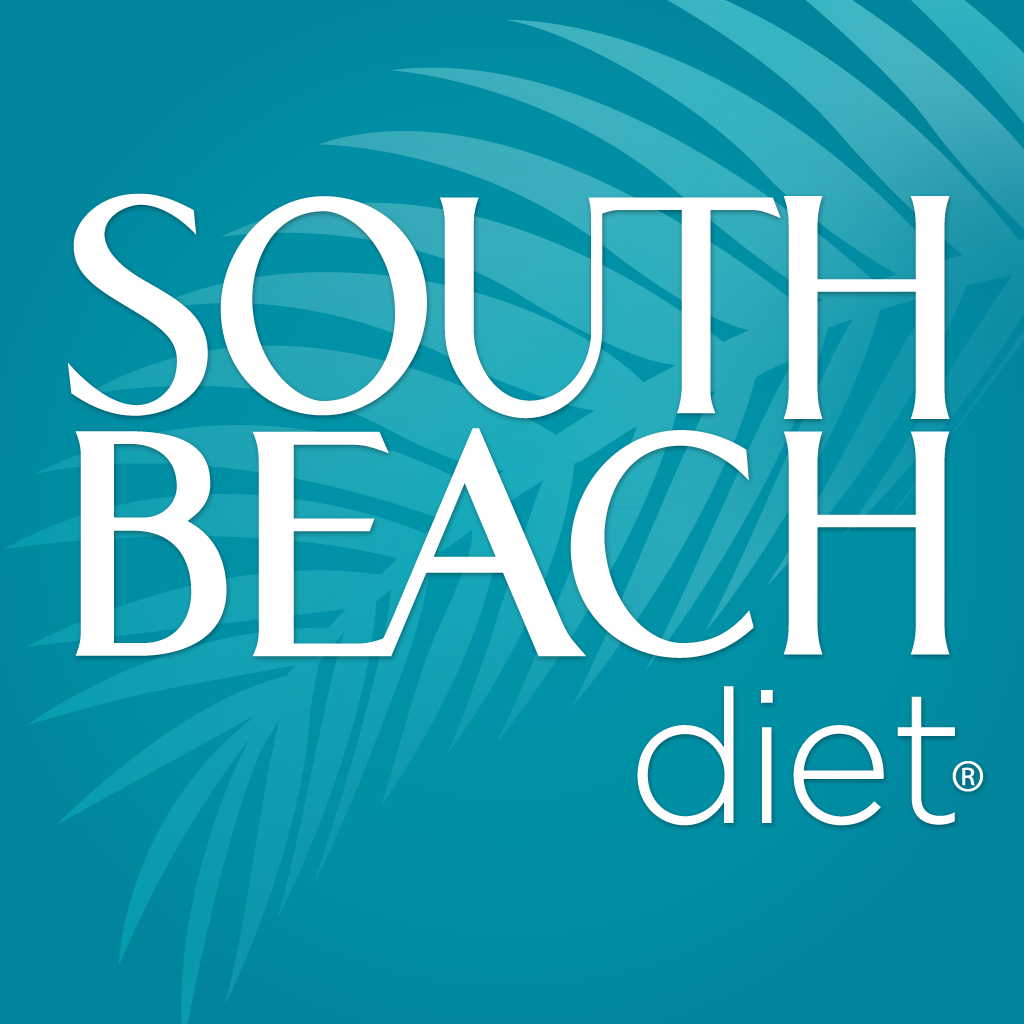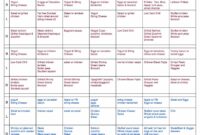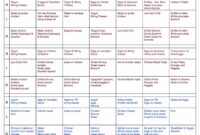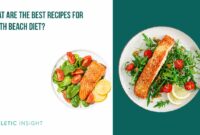South Beach Diet Summary: This diet, renowned for its phased approach, focuses on controlling blood sugar levels through strategic carbohydrate selection and portion control. It differentiates itself from other diets by emphasizing healthy fats and lean proteins while restricting certain carbohydrates, particularly those that rapidly spike insulin. This approach aims to promote sustained weight loss and improve overall metabolic health.
The South Beach Diet is divided into three phases: Phase 1, a strict low-carbohydrate phase designed for rapid initial weight loss; Phase 2, a gradual reintroduction of healthy carbohydrates; and Phase 3, a maintenance phase emphasizing long-term lifestyle changes. Understanding the nuances of each phase, the allowed and restricted foods, and the overall nutritional approach is key to successful implementation.
Diet Overview
The South Beach Diet is a low-carbohydrate, high-protein diet that emphasizes the consumption of healthy fats and lean protein. Unlike some restrictive diets, it focuses on making sustainable lifestyle changes rather than rapid weight loss through severe calorie restriction. The core principle is to manage blood sugar levels effectively by carefully selecting carbohydrates and prioritizing nutrient-dense foods. This approach aims to promote weight loss while minimizing hunger and improving overall health.
The South Beach Diet is structured in three phases, each designed to achieve specific goals. These phases gradually introduce more carbohydrates back into the diet as weight loss progresses and healthy eating habits are established. Each phase restricts certain food groups to varying degrees, helping to manage insulin levels and encourage healthy eating patterns.
The Three Phases of the South Beach Diet
The South Beach Diet is divided into three phases: Phase 1, Phase 2, and Phase 3. Each phase has a specific purpose and dietary guidelines.
Phase 1 is the most restrictive phase, focusing on eliminating unhealthy carbohydrates and sugars to quickly reduce blood sugar and jumpstart weight loss. This phase typically lasts for two weeks. Phase 2 gradually reintroduces healthy carbohydrates while maintaining the focus on lean protein and healthy fats. This phase is designed to be maintained until the desired weight is reached. Phase 3 is the maintenance phase, where individuals can incorporate a wider variety of foods while maintaining a healthy lifestyle and preventing weight regain. This phase is essentially a long-term plan for healthy eating.
Allowed and Restricted Foods in Each Phase
The South Beach Diet has specific guidelines for food intake in each phase.
Phase 1 restricts most fruits, sugary foods, and processed carbohydrates. Allowed foods include lean proteins (fish, poultry, beans), healthy fats (olive oil, avocados), non-starchy vegetables (spinach, broccoli), and limited amounts of whole grains. Restricted foods include bread, pasta, most fruits (except berries in limited quantities), sugary drinks, and processed foods.
Phase 2 allows a wider range of foods, including more fruits and some whole grains. However, it continues to restrict processed foods and unhealthy carbohydrates. The emphasis remains on lean protein, healthy fats, and non-starchy vegetables. Restricted foods remain similar to Phase 1, but some healthy carbohydrates are gradually reintroduced.
Phase 3 emphasizes maintaining a healthy balance of lean protein, healthy fats, and carbohydrates from whole grains and fruits. Portion control and mindful eating are crucial in this phase to prevent weight regain. Processed foods and sugary drinks should remain limited.
Sample Meal Plans
The following tables provide sample meal plans for each phase. Remember that these are just examples, and individual needs may vary. Consult a healthcare professional or registered dietitian for personalized dietary advice.
| Food | Quantity | Phase | Notes |
|---|---|---|---|
| Grilled Salmon | 4 oz | Phase 1 | Lean protein source, rich in omega-3 fatty acids |
| Steamed Broccoli | 1 cup | Phase 1 | Non-starchy vegetable, low in carbohydrates |
| Avocado Salad | ½ avocado | Phase 1 | Healthy fats, fiber |
| Unsweetened Almond Milk | 1 cup | Phase 1 | Low-carbohydrate alternative to dairy milk |
| Food | Quantity | Phase | Notes |
|---|---|---|---|
| Chicken Breast Salad | 6 oz | Phase 2 | Lean protein, can be paired with mixed greens |
| Quinoa | ½ cup | Phase 2 | Whole grain, good source of fiber and protein |
| Mixed Berries | ½ cup | Phase 2 | Low glycemic index fruit |
| Olive Oil and Vinegar Dressing | 1 tbsp | Phase 2 | Healthy fats |
| Food | Quantity | Phase | Notes |
|---|---|---|---|
| Lentil Soup | 1.5 cups | Phase 3 | High in fiber and protein |
| Whole Wheat Bread | 1 slice | Phase 3 | Choose whole grain options |
| Baked Chicken | 4 oz | Phase 3 | Lean protein source |
| Apple slices with a small amount of peanut butter | 1 medium apple, 1 tbsp peanut butter | Phase 3 | Healthy fats and fiber |
Nutritional Aspects
The South Beach Diet distinguishes itself through its carefully planned macronutrient ratios and selective carbohydrate approach, aiming for sustainable weight loss and improved metabolic health. This differs significantly from many other popular diets that may focus on extreme calorie restriction or the elimination of entire food groups.
The South Beach Diet emphasizes a balanced intake of macronutrients, although the specific ratios adjust across its three phases. Initially, the diet restricts carbohydrates to prioritize protein and healthy fats, gradually reintroducing more carbohydrates as weight loss progresses. This phased approach aims to manage blood sugar levels and curb cravings.
Macronutrient Ratios
The initial phase of the South Beach Diet significantly reduces carbohydrate intake, emphasizing higher protein and healthy fat consumption. This helps to stabilize blood sugar, reduce insulin resistance, and promote satiety. As the dieter progresses through the phases, the proportion of carbohydrates increases gradually, allowing for greater dietary flexibility while maintaining weight loss. The exact ratios vary depending on individual needs and the phase of the diet, but generally lean towards a higher protein and moderate fat intake compared to many other diets that heavily emphasize carbohydrates.
Carbohydrate Choices
The South Beach Diet is selective about carbohydrate sources. It strongly discourages refined carbohydrates like white bread, pastries, and sugary drinks, which are quickly digested and cause blood sugar spikes. Instead, it encourages complex carbohydrates like whole grains, fruits, and vegetables, which are digested more slowly and provide sustained energy. This distinction helps maintain stable blood sugar levels and prevents energy crashes often associated with rapid carbohydrate metabolism. For example, a dieter might replace white rice with brown rice or choose oatmeal over sugary cereals.
Benefits and Drawbacks of Nutrient Emphasis
The South Beach Diet’s emphasis on lean protein and healthy fats offers several potential benefits. Higher protein intake aids in preserving muscle mass during weight loss and promotes satiety, reducing hunger pangs. Healthy fats provide essential fatty acids, support hormone production, and contribute to overall health. However, a potential drawback is the initial restriction of many carbohydrate sources, which could lead to nutrient deficiencies if not carefully planned. Furthermore, the diet’s emphasis on specific foods might be difficult to maintain long-term for some individuals due to limited food choices. It is crucial to ensure a well-balanced intake of vitamins and minerals, possibly through supplementation, if dietary restrictions become too stringent.
Comparison to Other Diets
Compared to low-fat diets, the South Beach Diet prioritizes healthy fats, which may be beneficial for hormone regulation and satiety. Unlike very-low-carbohydrate ketogenic diets, the South Beach Diet gradually reintroduces carbohydrates, making it potentially easier to sustain long-term. Compared to restrictive diets focusing solely on calorie counting, the South Beach Diet emphasizes nutrient quality and the types of carbohydrates consumed, leading to a more balanced and sustainable approach to weight management. The phased approach, unlike many quick-fix diets, is designed to create lasting lifestyle changes rather than short-term weight loss.
Practical Application
Embarking on the South Beach Diet requires a structured approach and a commitment to consistent lifestyle changes. Successful implementation hinges on understanding the diet’s principles and adapting them to your individual needs and preferences. This section provides a step-by-step guide and practical strategies for maximizing your chances of success.
Getting Started with the South Beach Diet
Beginning the South Beach Diet involves a phased approach. Phase 1 focuses on eliminating high-glycemic carbohydrates and unhealthy fats to kickstart weight loss and improve insulin sensitivity. Phase 2 gradually reintroduces some healthy carbohydrates, while Phase 3 emphasizes long-term maintenance through balanced eating habits. Each phase has specific guidelines regarding food choices and portion sizes. It is crucial to consult the official South Beach Diet resources or a registered dietitian for detailed information on each phase’s requirements.
Tips for Successful Implementation and Adherence
Maintaining adherence to the South Beach Diet requires planning and mindful decision-making. Keeping a food journal can help track progress, identify potential pitfalls, and stay accountable. Preparing meals and snacks in advance can prevent impulsive unhealthy choices. Seeking support from friends, family, or support groups can provide encouragement and motivation. Furthermore, setting realistic goals and celebrating milestones along the way fosters a positive and sustainable approach.
Managing Hunger and Cravings
Hunger and cravings are common challenges during dietary changes. Addressing these requires a multi-pronged strategy. Prioritizing protein and healthy fats in meals and snacks helps promote satiety and reduces cravings. Staying hydrated by drinking plenty of water throughout the day can also alleviate hunger. Engaging in regular physical activity can help manage cravings and improve overall well-being. Finally, mindful eating practices, such as paying attention to hunger and fullness cues, can help control portion sizes and prevent overeating.
Adapting the Diet to Different Lifestyles and Preferences
The South Beach Diet can be adapted to suit various lifestyles and preferences. For individuals with busy schedules, meal prepping and utilizing convenient, healthy options are crucial. Those who enjoy cooking can experiment with a wide variety of South Beach-friendly recipes. Vegetarians and vegans can modify the diet by focusing on plant-based protein sources, such as legumes, tofu, and nuts, and incorporating plenty of fruits and vegetables. Individuals with specific dietary restrictions or allergies should consult with a healthcare professional or registered dietitian to ensure the diet is safe and appropriate for their needs. For example, a person with a gluten intolerance can easily adapt the diet by choosing gluten-free options for bread and other grains. Someone who is lactose intolerant can substitute dairy products with lactose-free alternatives or plant-based milk options.
Recipe Examples
The South Beach Diet emphasizes whole, unprocessed foods, lean protein, and healthy fats. The following recipes provide examples of delicious and satisfying meals that align with the dietary guidelines for each phase. Remember to adjust portion sizes to meet your individual caloric needs.
Phase 1 Recipes
These recipes are suitable for the initial, strictest phase of the South Beach Diet, focusing on minimizing refined carbohydrates and sugars.
- Grilled Salmon with Asparagus and Lemon
- Ingredients: 1 salmon fillet (6 oz), 1 bunch asparagus, 1 lemon, 2 tbsp olive oil, salt, pepper.
- Steps: Preheat grill to medium-high. Toss asparagus with 1 tbsp olive oil, salt, and pepper. Grill asparagus for 5-7 minutes. Season salmon with salt, pepper, and lemon juice. Grill salmon for 4-6 minutes per side. Serve salmon alongside grilled asparagus and a lemon wedge. The dish offers a vibrant green from the asparagus contrasting with the pink salmon, creating a visually appealing meal. The taste is fresh, bright, and subtly lemony, with a satisfyingly firm salmon texture and tender-crisp asparagus.
- Chicken and Vegetable Stir-fry
- Ingredients: 1 lb boneless, skinless chicken breast (diced), 1 cup broccoli florets, 1/2 cup sliced bell peppers, 1/4 cup sliced onions, 2 tbsp soy sauce (low sodium), 1 tbsp olive oil, garlic powder, ginger powder.
- Steps: Stir-fry chicken in olive oil until cooked through. Add vegetables and stir-fry for 3-5 minutes. Season with soy sauce, garlic powder, and ginger powder. The stir-fry boasts a colorful array of green broccoli, red and yellow bell peppers, and white onions against the backdrop of the browned chicken. The taste is savory and slightly sweet, with a satisfying combination of tender chicken and crisp-tender vegetables.
- Shrimp Scampi with Zucchini Noodles
- Ingredients: 1 lb shrimp (peeled and deveined), 2 zucchini (spiralized into noodles), 2 tbsp olive oil, 2 cloves garlic (minced), 1/4 cup dry white wine, 2 tbsp lemon juice, salt, pepper, red pepper flakes (optional).
- Steps: Sauté garlic in olive oil until fragrant. Add shrimp and cook until pink. Add zucchini noodles and cook for 2-3 minutes. Stir in white wine, lemon juice, salt, pepper, and red pepper flakes (if using). The dish features a creamy white sauce coating the bright green zucchini noodles and pink shrimp. The taste is light, bright, and slightly spicy (if red pepper flakes are used), with a delicate balance of garlic, lemon, and seafood flavors. The texture is a pleasing contrast between the tender shrimp and the slightly firm zucchini noodles.
Phase 2 Recipes
Phase 2 introduces some healthy carbohydrates back into the diet.
- Turkey Meatloaf with Sweet Potato Mash
- Ingredients: 1 lb ground turkey, 1/2 cup chopped onion, 1/4 cup breadcrumbs (whole wheat), 1 egg, 1 tsp Worcestershire sauce, salt, pepper, 2 medium sweet potatoes (mashed).
- Steps: Combine ground turkey, onion, breadcrumbs, egg, Worcestershire sauce, salt, and pepper. Shape into a loaf and bake at 375°F for 30-40 minutes. Serve with mashed sweet potatoes. The meatloaf has a rustic brown appearance, while the sweet potato mash offers a creamy, golden hue. The taste is savory and slightly sweet, with a tender meatloaf and smooth, subtly sweet mashed sweet potatoes.
- Chicken Breast with Quinoa and Roasted Vegetables
- Ingredients: 1 lb boneless, skinless chicken breast, 1 cup quinoa (cooked), 1 cup broccoli florets, 1/2 cup chopped carrots, 1/4 cup olive oil, salt, pepper, herbs (rosemary, thyme).
- Steps: Roast vegetables with olive oil, salt, pepper, and herbs at 400°F for 20-25 minutes. Bake or pan-fry chicken until cooked through. Serve chicken with cooked quinoa and roasted vegetables. The dish presents a colorful mix of green broccoli, orange carrots, and the golden-brown chicken, complemented by the fluffy white quinoa. The flavors are hearty and satisfying, with tender chicken, slightly nutty quinoa, and roasted vegetables offering a depth of flavor.
- Baked Cod with Brown Rice and Steamed Green Beans
- Ingredients: 1 lb cod fillets, 1 cup brown rice (cooked), 1 cup green beans (steamed), 1 tbsp olive oil, lemon juice, salt, pepper.
- Steps: Bake cod with olive oil, lemon juice, salt, and pepper at 375°F for 15-20 minutes. Serve with cooked brown rice and steamed green beans. The baked cod is flaky and white, contrasting with the light green beans and the nutty brown rice. The taste is mild and fresh, with the cod offering a delicate flavor complemented by the slightly earthy brown rice and the crisp green beans.
Phase 3 Recipes
Phase 3 allows for a wider variety of healthy carbohydrates and some higher-carbohydrate fruits.
End of Discussion
In conclusion, the South Beach Diet offers a structured approach to weight loss and improved metabolic health. While it boasts potential benefits like weight management and better blood sugar control, careful consideration of potential risks and individual needs is paramount. The diet’s success hinges on adherence to its principles and the integration of sustainable lifestyle changes beyond the initial phases. Remember to consult a healthcare professional before embarking on any significant dietary changes.




